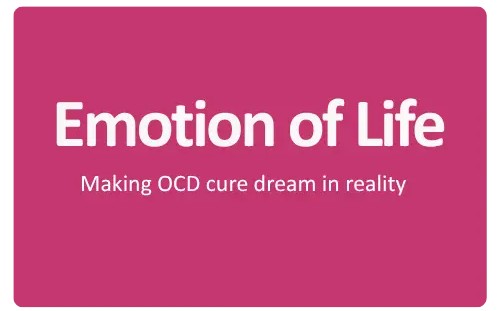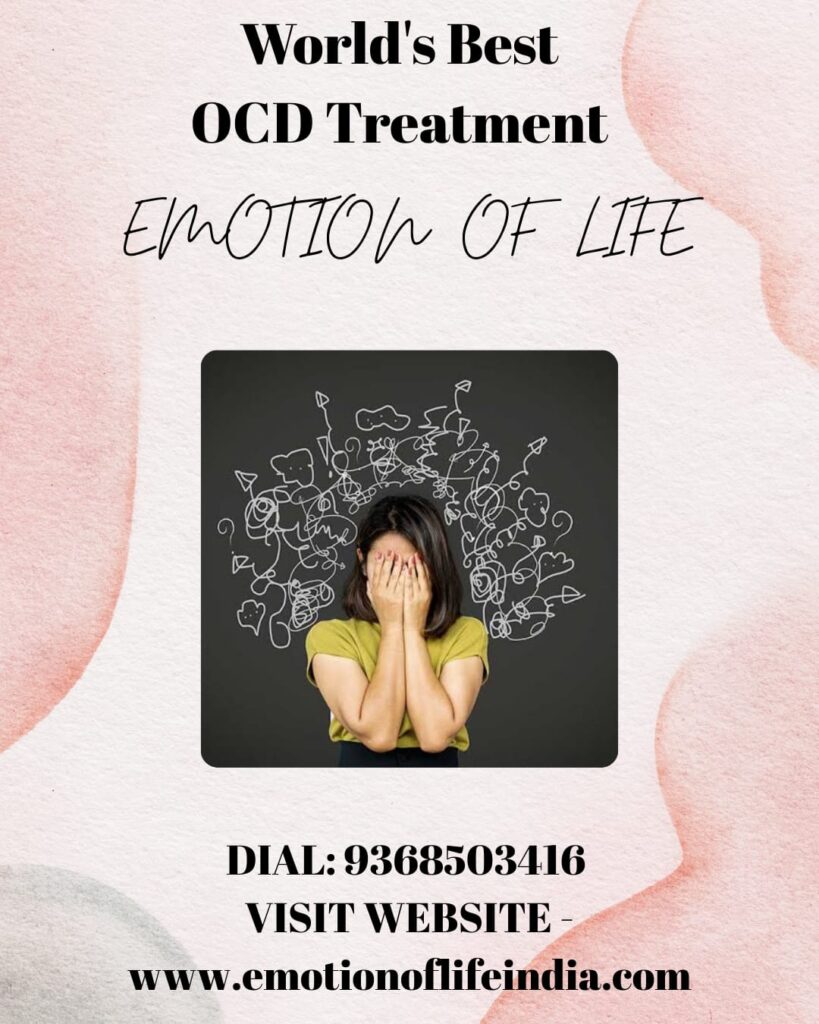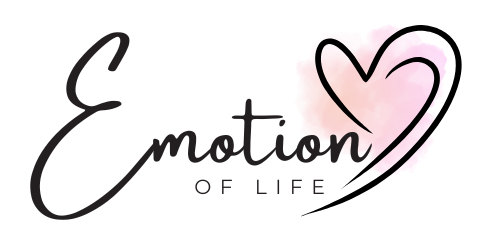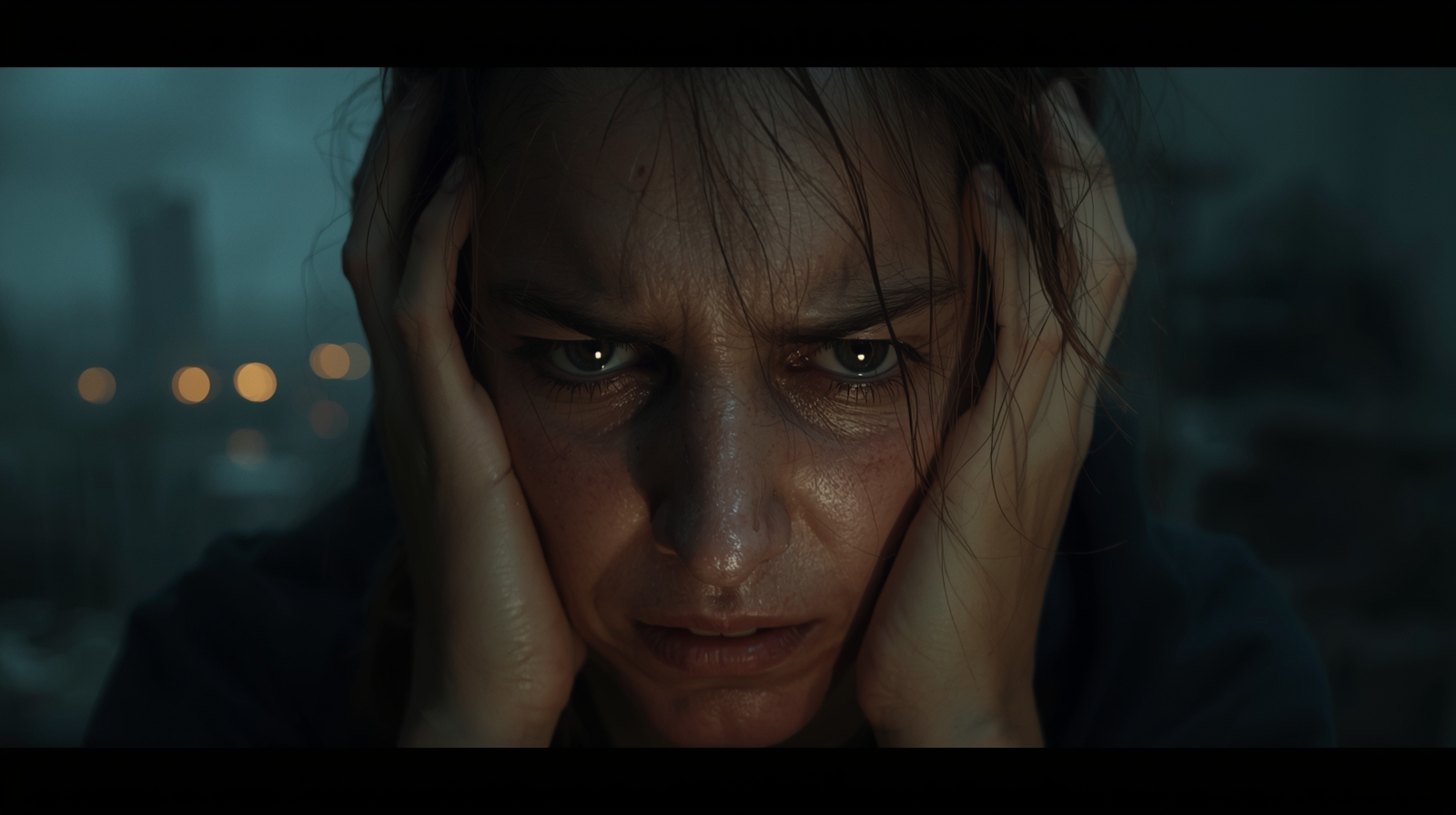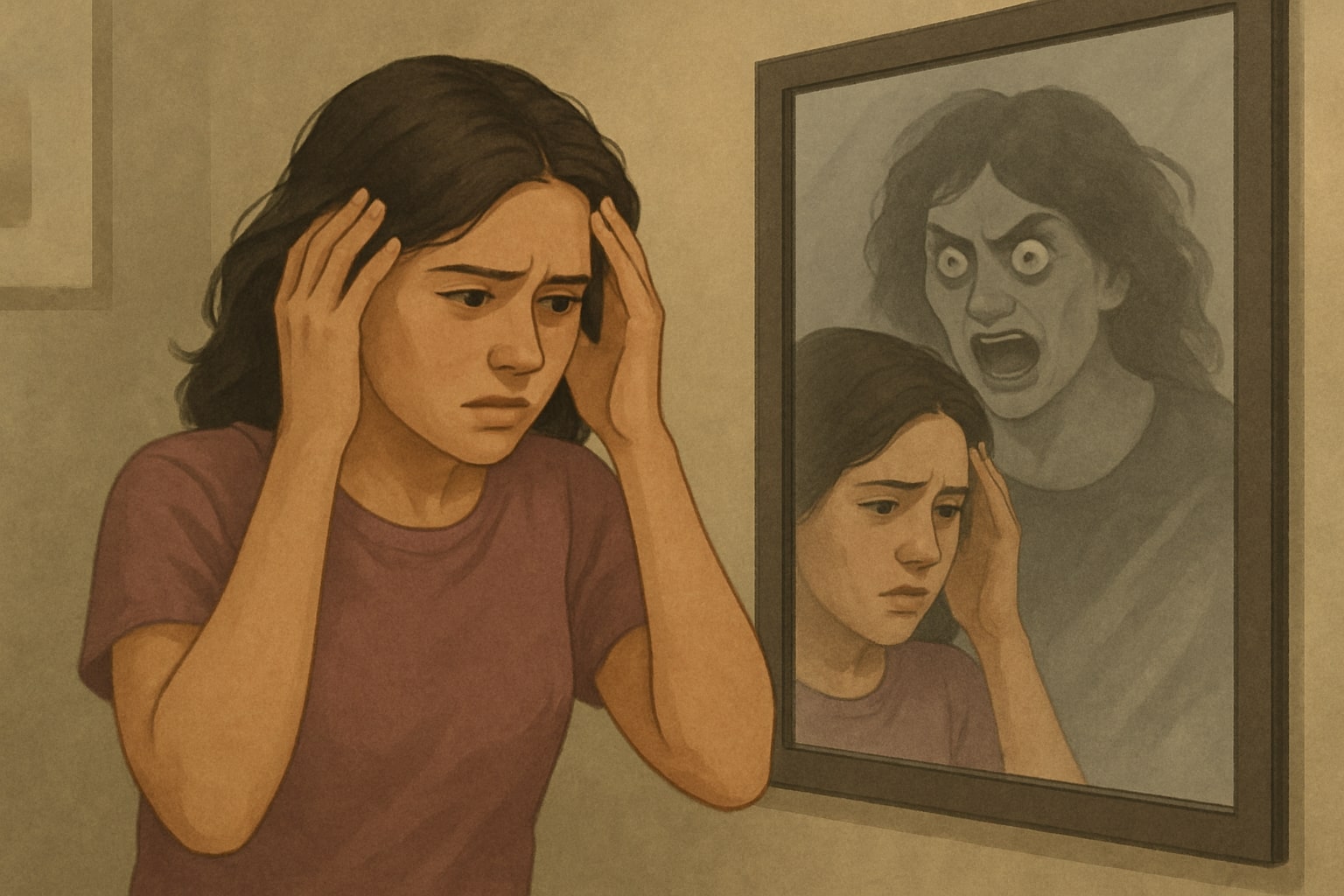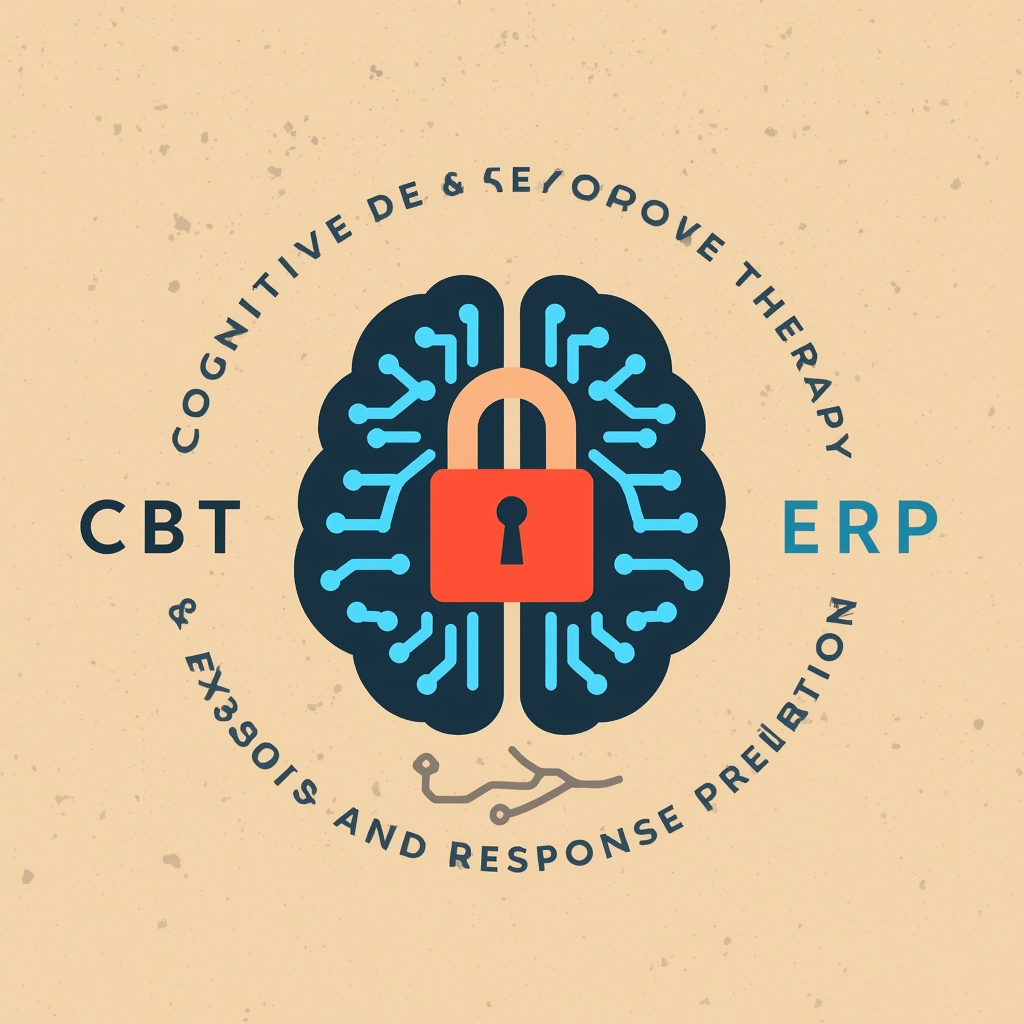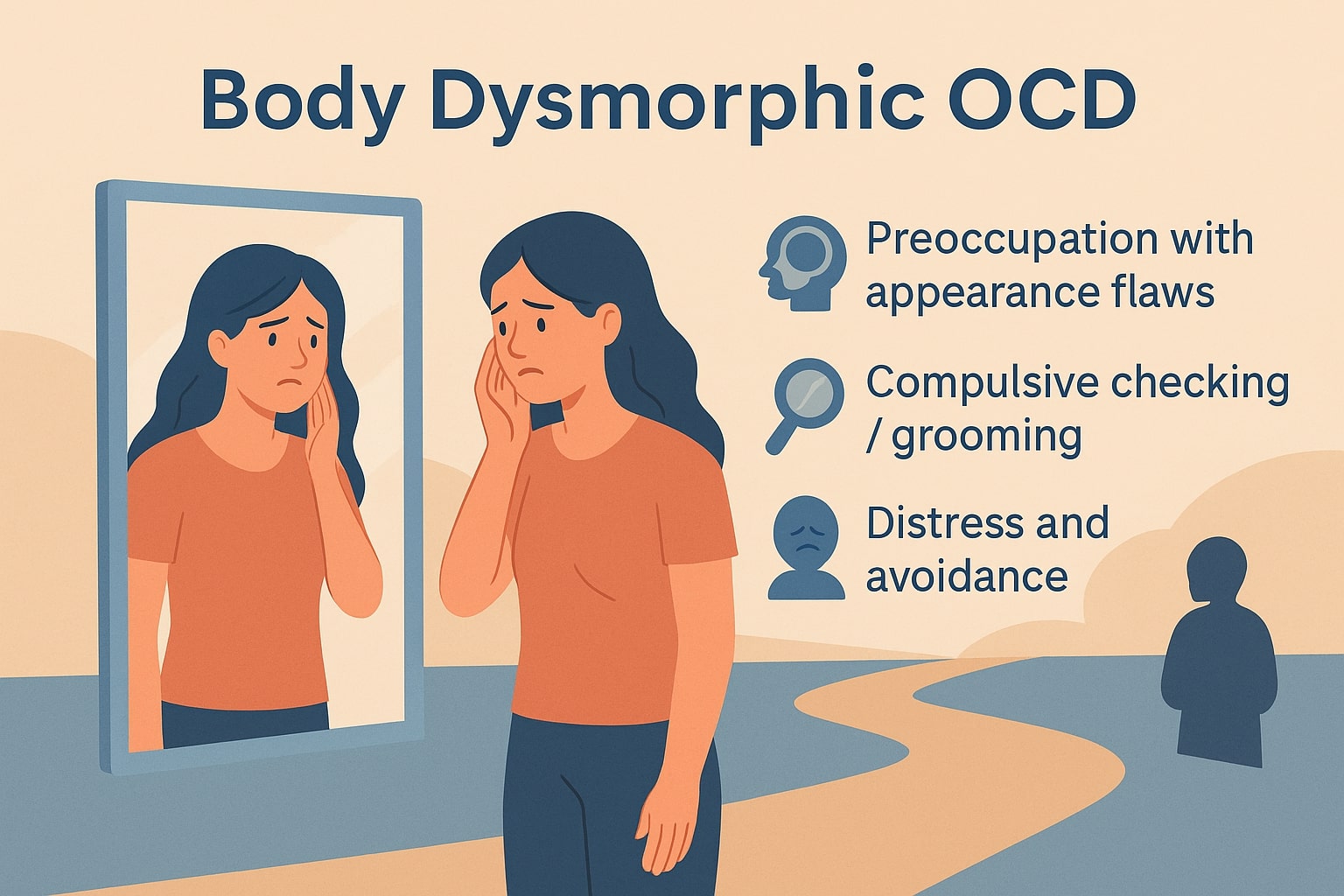Harm OCD Treatment without medicine with CBT and ERP for OCD: Harm OCD is a distressing subtype of obsessive-compulsive disorder (OCD) characterized by unwanted, intrusive thoughts about harming oneself or others. Despite their disturbing nature, these thoughts do not reflect the individual’s true desires or intentions. People with Harm OCD experience intense distress and often engage in compulsive behaviours to neutralize their fears, such as avoidance, excessive reassurance-seeking, or mental rituals. However, these compulsions reinforce the obsessive cycle, making the condition increasingly difficult to manage. This article explores the symptoms, causes, psychological effects, and evidence-based treatment approaches for Harm OCD, including Cognitive Behavioural Therapy (CBT), Exposure and Response Prevention (ERP), Acceptance and Commitment Therapy (ACT), and mindfulness techniques.
Harm OCD involves both obsessions (unwanted intrusive thoughts) and compulsions (repetitive behaviours performed to reduce anxiety). The most common symptoms include: Intrusive thoughts about violence – Disturbing mental images or fears of harming oneself or others, despite having no desire to act on them.
Fear of losing control in Harm OCD – Persistent anxiety that one might suddenly act on violent urges.
Compulsions to neutralize thoughts – Engaging in rituals such as counting, praying, or excessive checking to reassure oneself.
Avoidance of triggers – Avoiding people, places, or objects (e.g., sharp tools) that could be associated with potential harm.
Hyper-vigilance – Constantly monitoring one’s thoughts and actions to prevent any perceived danger.
Intense guilt and shame – Feeling morally responsible for having these thoughts, leading to severe self-doubt.
These symptoms create a self-reinforcing cycle, where compulsions provide temporary relief but ultimately intensify obsessive fears over time.
The Impact of Harm OCD and Harm OCD Treatment
Person with Harm OCD before reaching to Harm OCD Treatment in Emotion of Life can deeply affect multiple aspects of an individual’s life, including mental, physical, and social well-being.
- Psychological Impact of Harm OCD
Persistent Anxiety – The overwhelming fear of acting on thoughts creates extreme emotional distress.
Mental Exhaustion – The constant monitoring of one’s own thoughts drains cognitive energy.
Depression – Feelings of hopelessness and self-doubt can lead to depressive symptoms.
Guilt and Self-Blame – Individuals may question their morality and identity, worsening their mental state.
- Physiological Impact of Harm OCD and Harm OCD Treatment
Chronic Stress Symptoms – Increased muscle tension, headaches, and a rapid heart rate.
Sleep Disruptions – Fearful thoughts make it difficult to fall or stay asleep, leading to insomnia.
Fatigue – The ongoing emotional and cognitive burden causes constant exhaustion.
- Social and Relationship Impact of Harm OCD
Isolation – Fear of being around others can lead to social withdrawal.
Relationship Struggles – Loved ones may misunderstand the condition, causing frustration and distance.
Avoidance of Social Interactions – Individuals may withdraw to avoid potential triggers, increasing loneliness.
These impacts highlight the importance of early intervention and support for Harm OCD Treatment, as untreated Harm OCD can severely affect one’s quality of life.
Types of Harm OCD and Harm OCD Treatment
Harm OCD presents itself in different ways, including:
Fear of Self-Harm – An irrational worry that one might lose control and hurt oneself.
Fear of Harming Others – Anxiety about unintentionally harming loved ones or strangers.
Fear of Negligence – Worries about failing to prevent harm (e.g., leaving the stove on).
Fear of Losing Control – Persistent fear of acting violently despite no history of aggression.
Understanding these variations helps individuals recognize their symptoms and seek appropriate treatment.
Causes of Harm OCD and Harm OCD Treatment
Harm OCD does not have a single cause but arises from a combination of environmental, psychological, and behavioural factors.
- Environmental Triggers of Harm OCD and Harm OCD Treatment
Traumatic Experiences – Exposure to distressing events or violent situations can contribute to the development of intrusive thoughts.
High-Stress Situations – Major life changes, work pressure, or conflicts can worsen symptoms.
- Psychological and Cognitive Factors of Harm OCD and Harm OCD Treatment
Perfectionism – The need for absolute certainty about one’s morality and intentions.
Over-Responsibility – A belief that one must prevent harm at all costs.
Intolerance of Uncertainty – A struggle to accept that uncertainty is a normal part of life.
- Learned Behaviours and Thought Patterns
Past Associations – Previous intrusive thoughts may lead to heightened fear responses over time.
Avoidance Coping Mechanisms – Avoidance reinforces the fear and gives obsessive thoughts more power. By understanding these causes, individuals can work towards breaking the OCD cycle and regaining a sense of control over their thoughts.
Success Story of Overcoming of Harm OCD and Harm OCD Treatment in Emotion of Life
Client Profile: Mr. A, 19 years, Male, Elder son among three siblings, Hugli: Karnataka, India, Engineering student, History of Symptoms: 5 months, Primary Complaint: Intrusive harm-related obsessive thoughts, Daily Intrusive Thoughts Duration: 16-18 hours.
Background and Presenting Concerns: The patient experienced persistent, distressing intrusive thoughts of harming himself or his family members. The frequency and intensity of these thoughts severely impacted his daily functioning. The following were the primary concerns:
1) Concern: What if I harm my mother, brother, sister, or father? (200 times a day, 1000 minutes)
Outcome: No such thoughts.
2) Concern: I feel guilty for having these harm-related thoughts. Why don’t I feel guilty enough? (200 times a day, 500 minutes)
Outcome: No guilt, only clarity and calm.
3) Concern: What if I jump from the balcony? What if I stab myself? (200 times a day, 1000 minutes)
Outcome: No such thoughts, only comfort and safety.
4) Concern: I see myself jumping off a balcony, everything blacks out, I see my own funeral. (120 times a day, 600 minutes)
Outcome: No such visions.
5) Concern: If I commit suicide, I will go to hell as per my religion. (70 times a day, 140 minutes)
Outcome: No such thoughts, only trust and serenity.
6) Concern: What if I don’t act on it this time but do it next time? (60 times a day, 210 minutes)
Outcome: No such thoughts, only certainty and control.
7) Concern: I avoid my mom because of harming thoughts. (2 times a day, 2 minutes)
Outcome: No avoidance, only ease.
8) Concern: What if I throw my dad, brother, and mother from the balcony?
Outcome: No such thoughts, only safety and love.
9) Concern: What if, after all my efforts, I act on the harm thoughts?
Outcome: No such thoughts, only trust in self.
10) Concern: The thoughts are distressing and make me anxious. I am not convinced that I won’t act on them. I don’t trust myself, even after all the evidence against it.
Outcome: No distress, only confidence in myself.
Outcome and Recovery of Harm OCD Treatment in 5 months daily session Program:
After consistent therapy and structured interventions over a period of months, the patient reported significant improvement:
- Elimination of intrusive thoughts and obsessive guilt.
- Increased self-confidence and trust in himself.
- No longer avoiding family interactions.
- Reduction in overall anxiety and distress.
- Resumption of daily activities without obsessive fear.
Conclusion on Harm OCD Treatment:
This case demonstrates how Harm OCD, despite being severely distressing, is highly treatable with structured therapy, medication (if needed), and family support. The patient successfully overcame his intrusive thoughts and regained control over his life.
How to Overcome as Harm OCD Treatment in Emotion of Life
Managing Harm OCD requires a multi-approach strategy, including therapy, lifestyle changes, and self-awareness.
- Cognitive Behavioural Therapy (CBT)
CBT helps individuals recognize and challenge irrational thought patterns. It focuses on:
Identifying distorted thinking.
Reframing intrusive thoughts logically.
Understanding that thoughts do not define a person’s character.
- Exposure and Response Prevention (ERP)
ERP is considered the most effective approach for treating OCD. It involves:
Gradually exposing individuals to their fears.
Preventing the compulsion or ritual that neutralizes anxiety.
Helping the brain learn that intrusive thoughts do not lead to real harm.
ACT encourages individuals to accept intrusive thoughts instead of fighting them. Key strategies include:
Diffusion – Learning to see thoughts as mental events, not as realities.
Mindfulness – Practicing non-judgmental awareness of thoughts.
Values-Based Actions – Focusing on meaningful activities instead of compulsions.
- Mindfulness and Thought Reframing
Mindfulness Meditation – Reduces emotional reactivity to intrusive thoughts.
Cognitive Reframing – Helps individuals see that intrusive thoughts do not predict real actions.
- Lifestyle Adjustments to Reduce Anxiety
Regular Exercise – Physical activity reduces stress hormones and improves mood.
Healthy Diet and Sleep – Proper nutrition and rest support emotional resilience.
Relaxation Techniques – Yoga, journaling, and deep breathing promote mental calmness.
- Self-Compassion and Education
Accepting Uncertainty – Understanding that absolute certainty is not necessary.
Self-Forgiveness – Recognizing that intrusive thoughts are not personal failures but automatic mental processes. With consistent effort and support, individuals can gradually reduce the power of intrusive thoughts and regain confidence in themselves.
FAQ – Harm OCD Treatment
- What is Harm OCD?
Harm OCD is a type of obsessive-compulsive disorder where a person experiences intrusive, unwanted thoughts about causing harm to themselves or others, even though they have no intention of acting on them. These thoughts cause intense fear, guilt, and anxiety. - Can Harm OCD be treated without medication?
Yes. At Emotion of Life, we specialize in treating Harm OCD without medication using scientifically proven methods like Cognitive Behavioural Therapy (CBT) and Exposure and Response Prevention (ERP). Our approach helps you reduce anxiety, break the obsession–compulsion cycle, and live with confidence. - How does CBT and ERP help in Harm OCD recovery?
- CBT helps you identify and challenge irrational beliefs related to harm thoughts.
- ERP gradually exposes you to feared situations or thoughts without engaging in compulsions, helping your brain learn that these thoughts are harmless and lose their power over time.
- Will treatment make my intrusive thoughts go away completely?
With the right treatment, most people notice a significant reduction in the frequency and intensity of intrusive thoughts. At Emotion of Life, we focus on helping you respond differently to these thoughts so they no longer control your life. - How long does Harm OCD treatment take?
Recovery time varies, but with our OCD Recovery & Cure Program, many clients start noticing positive changes in 12 – 16 weeks in daily session, depending on the severity of symptoms and commitment to the process. - Is it safe to talk about my harm thoughts during therapy?
Absolutely. We understand that these thoughts are unwanted and do not reflect your true intentions. At Emotion of Life, we provide a safe, non-judgmental space where you can openly share your experiences without fear. - Can Harm OCD come back after recovery?
While intrusive thoughts may reappear during stressful times, learning proper coping strategies through CBT and ERP ensures you can manage them effectively and prevent relapse. - Why choose Emotion of Life for Harm OCD treatment?
- 24 years of expertise in OCD management by Shyam Gupta and Pratibha Gupta
- Daily therapy sessions in online and onsite (Agra) formats
- Non-medicated, personalized recovery plans
- Proven track record of helping clients worldwide overcome Harm OCD
Harm OCD can be deeply distressing, but it does not define a person’s identity or intentions. Intrusive thoughts are just thoughts—they do not dictate actions. With the right treatment, individuals can break free from obsessive fear and regain control over their lives. By implementing CBT, ERP, ACT, mindfulness practices, and lifestyle modifications, individuals can learn to manage intrusive thoughts effectively. Seeking professional guidance and applying these techniques can significantly improve emotional well-being and overall quality of life. Increasing awareness and understanding of Harm OCD is crucial to destigmatizing the condition and supporting those who struggle with it. With education, compassion, and the right tools, recovery is possible.
You can write to us: info@emotionoflife.in
Reach out us via call or WhatsApp: 9368503416
Visit our website for more information: www.emotionoflife.in
If you’re ready to take the next step : Book Now.
OCD Types | Meet Our Experts | Success Stories | Blog| Contact Us| Book Now
